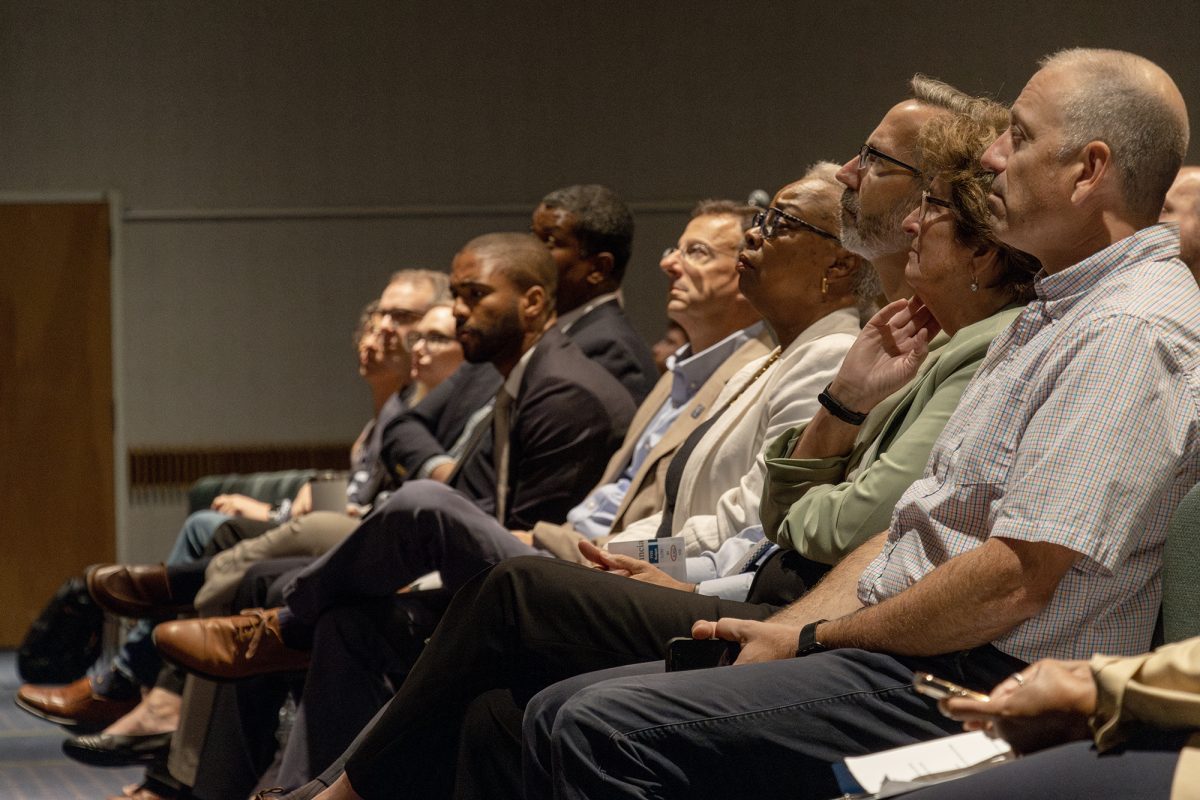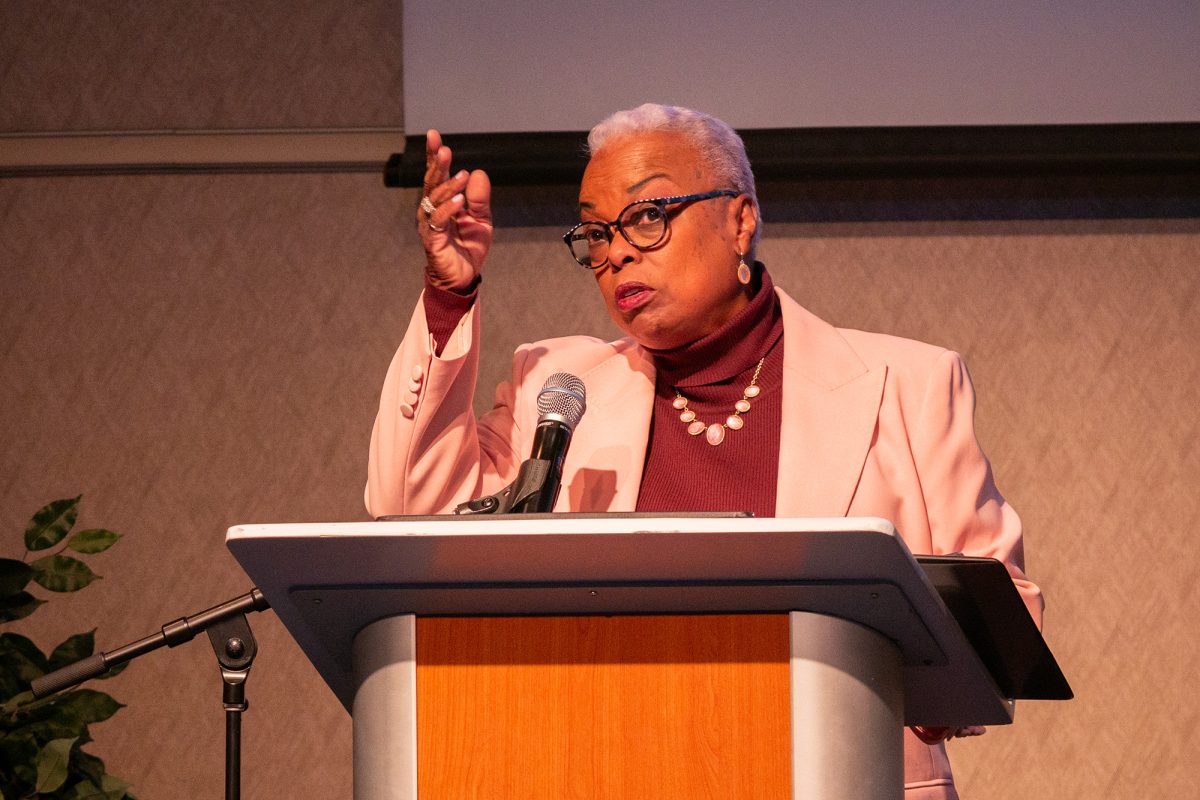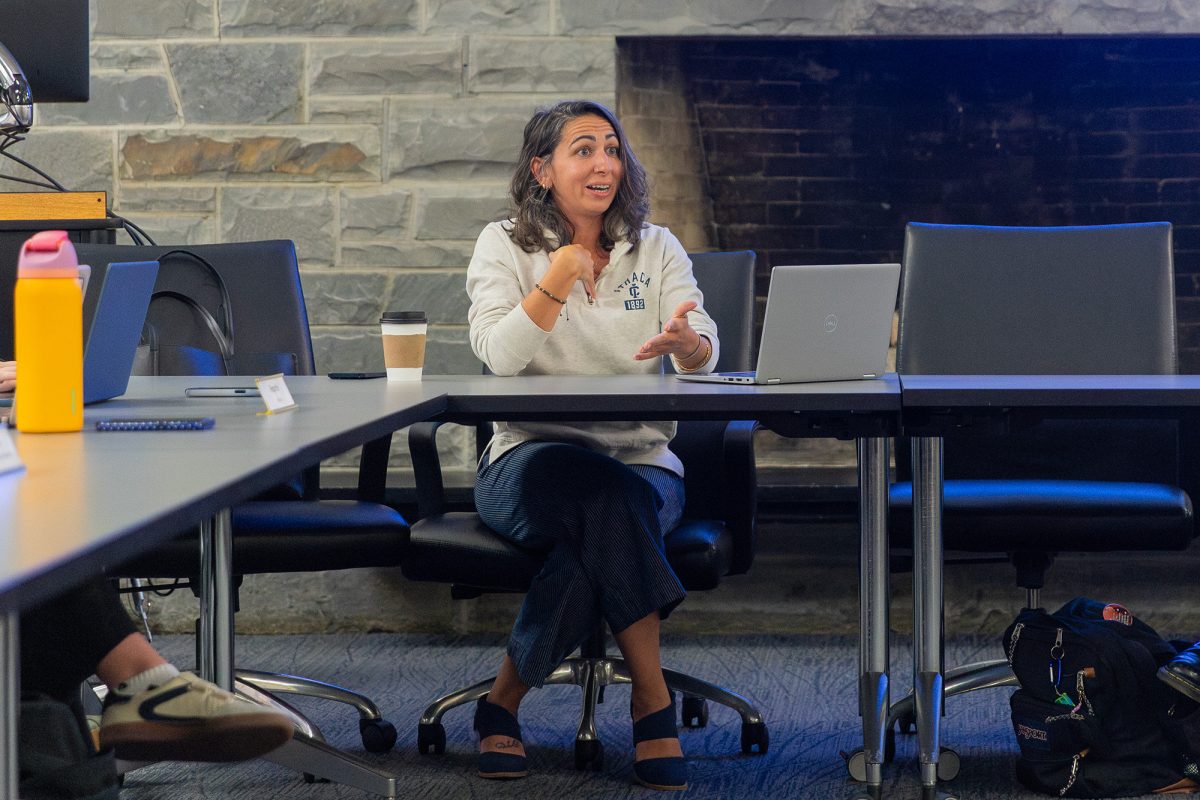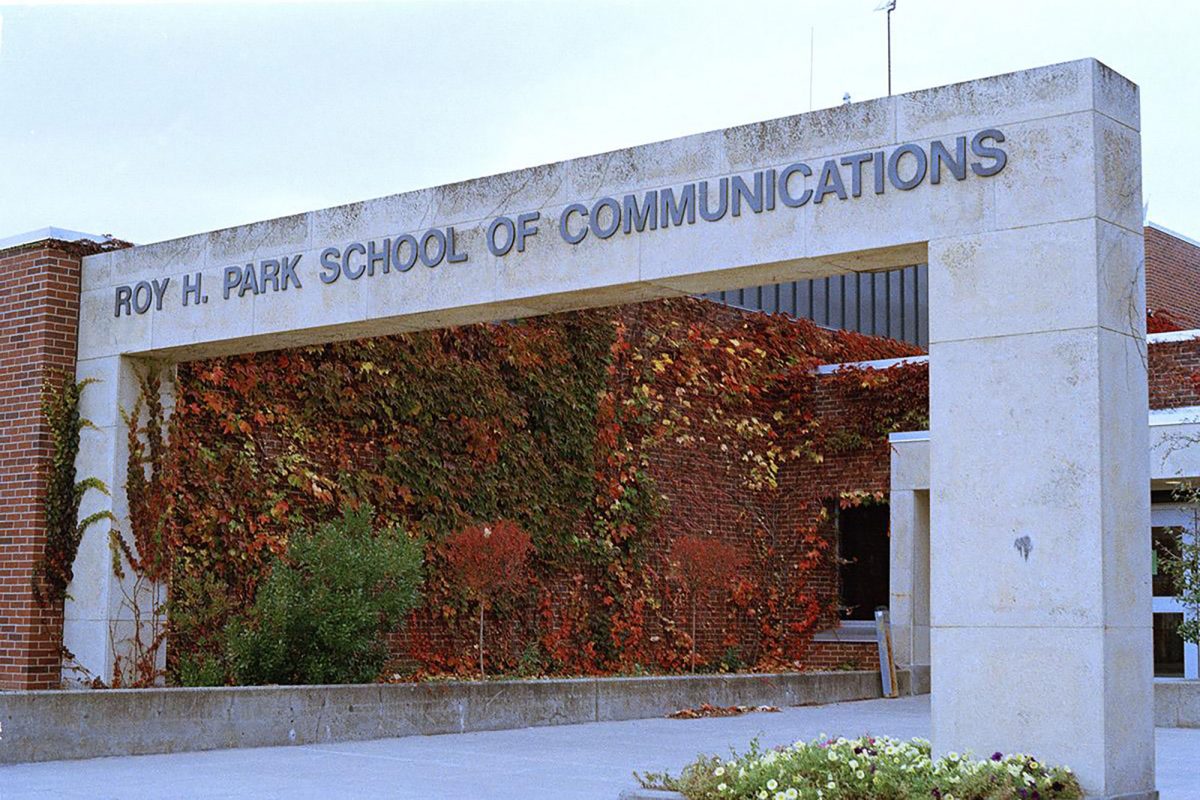This story was updated at 3:31 p.m. Aug. 28 to add information about the expense reduction targets.
Ithaca College concluded its administrative analysis study with the Huron Consulting Group in June. Though the study has ended, administrators are still working to reshape the college’s organizational structure and align the size of the faculty and staff workforces to meet a smaller target student body enrollment, as part of the work to close the college’s budget deficit by Fiscal Year 2028.
The college started working with Huron in October 2024 to understand realistic enrollment projections and identify opportunities to decrease costs and increase revenue.
After the college missed the Fall 2024 enrollment target by 182 students, Huron helped administrators decrease the college’s first-year student enrollment target and overall target student body size to 4,500 students to make more accurate revenue projections.
During the Aug. 26 All-College Gathering, Rakin “Rock” Hall said that reducing the target allowed the college to meet its Fall 2025 new student enrollment goal.
Following insight from Huron, administrators also restructured the college into five divisional areas, effective July 1, to improve efficiency.
Each divisional area’s leader has been working to meet expense reduction targets for fiscal years 2026, 2027 and 2028 — which may include reducing their workforce.
Restructuring
President La Jerne Cornish said during the All-College Welcome that administrators are working to align the size of the faculty and staff with the student body size.
The college’s fall enrollment ranged from 6,266 to 6,949 students from 2010 to 2019, but enrollment decreased each year from 2020 to 2024 following the start of the COVID-19 pandemic. The college furloughed or laid off at least 264 staff members in 2020 and 2021 and cut 130 faculty positions in 2021 to cut $40 million in expenses.
While the number of faculty members has decreased each year from 2021 to 2024, the number of staff members increased in 2022, 2023 and 2024.
Insight from Huron has helped the college change its organizational structure.
With the new structure, Melanie Stein, executive vice president and provost, leads the Division of Academic Affairs, Center for Student Success and the Center for Career Exploration.
Tim Downs, senior vice president and chief financial officer, now oversees the Divisions of Advancement, Enrollment, and Marketing Communications in addition to Finance and Administration.
David Weil, senior vice president for Strategic Services and Initiatives, now also oversees the Office of Human Resources.
In addition to serving as vice president, general counsel and secretary to the Board of Trustees, Emily Rockett now also supervises the Office for Government, Community, and Constituent Relations.
Stanley Bazile, vice president for Student Affairs and Campus Life, now oversees the Department of Intercollegiate Athletics.
Each divisional area leader’s direct reports and responsibilities increased with the restructuring, but their compensation remained the same, according to Cornish’s April email announcing the changes.
Stein told The Ithacan in April that the divisional restructuring will help the college combine similar areas to better support students and recognize any redundancies.
The college formed the new Academic Support Center by combining staff from the Center for Student Success and members of the deans’ offices who focus on student support, according to the Aug. 6 email announcing the new center.
Downs told The Ithacan in April that the new ASC will allow students to find advising and support in one centralized location and could decrease the number of staff members needed to support the volume of students.
Downs said each divisional area leader was given an expense reduction target for fiscal years 2026, 2027 and 2028. Downs declined to share each division’s expense reduction target.
“The divisional targets are not being publicly shared as the communication and roll-out, particularly where positions are being eliminated, are being managed by each division,” Downs said via email.
Downs said via email that divisional leaders will contribute to the overall target of reducing expenses by $11 million by FY 2028. He said the college will cover 60% of this target during FY 2026 and roughly split the remaining cost reduction between FY 2027 and 2028.
Divisional leaders may decrease costs by redirecting or eliminating positions that are not critical to the institution or by choosing not to fill a vacancy created by retirements or employees leaving the college. He said that spreading the total expense reduction target over three years instead of one allows division leaders to make more thoughtful changes.
“There’s more flexibility, given that there’s time [before the FY 2027 and FY 2028 targets must be met],” Downs said. “For example, if they knew, OK, we need this organization to get a little bit smaller and we’re going to make changes in that area, in FY 27, it could be that somebody retires, or somebody leaves, and they say, ‘Oh, perfect. I’m now going to take the opportunity. I was going to do this, but now I’m going to do that.’”
Weil said the college does not comment on specific positions eliminated through the administrative analysis study. Weil said the Division of Information Technology and Analytics has made recent staff changes that are unrelated to deficit reduction efforts, like restructuring the organization chart to have all staff members who manage and service campus computers report to the same director.
Weil said IT makes staffing changes as needed to improve efficiency and meet evolving needs. Weil said restructuring — whether related to the expense reduction targets or part of typical institutional re-organization — is challenging for leaders, who want to respect their employees while also being fiscally responsible.
“Across this institution, with the restructurings and some positions not being filled and all those changes, it does have a real impact on people and I think that’s something as an institution that we just need to be aware of as we continue to work to … provide our support for the campus community,” Weil said.
Cornish said during the All-College Gathering that she understands restructuring has been difficult for divisional leaders and their staff. Cornish said she had nine vice presidents when she started serving as interim president in 2021, but she has since decreased her executive council to seven vice presidents.
Cornish announced in an Aug. 18 email to staff and faculty that she will eliminate the position of Vice President for Marketing Communications, which has been held by Mark Eyerly since its creation, effective Aug. 31. Leadership from the Office of Marketing Communications will directly report to Downs.
Dave Maley, director of Public Relations, said via email that the vice president for Human Resources position, which was last held by Hayley Harris, was eliminated from Cornish’s Executive Council in 2022. After Harris left the college, Cornish decided to name Kirra Franzese as Associate Vice President and Chief Human Resources Officer.
“I cannot ask any division of this college to do anything that I am not willing to do myself as your leader,” Cornish said during the All-College Gathering. “These things have been hard to do, but these are things that we must do. … We will reap that mandated financial sustainability goal given to us by the board by FY 28, and we will move forward together.”
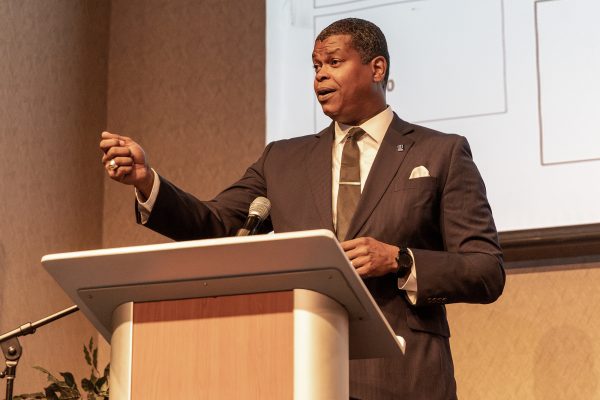
Enrollment
Cornish announced that administrators changed the college’s total target enrollment from 5,300-5,400 students to 4,500 students in an April message to the campus community.
“This reduction in the desired size of the student body considers the demographic cliff, the national landscape, and institutional goals,” Cornish said in the email. “This step will alleviate the financial pressures attached to missing larger class-size targets.”
Downs said during the All-College Gathering that college administrators hoped to enroll 1,150 new students — 1,070 first-year students and 80 transfer students — for Fall 2025.
Hall said during the All-College Gathering that 1,197 new students had enrolled at the college for Fall 2025 as of Aug. 26.
“Right now, we are pacing in a very positive direction to land north of 1,150 and to maintain our goal and we’re already working on future strategies,” Hall said.
The college received 12,374 first-time, first-year undergraduate student applications for Fall 2025, a 3.59% increase from the 12,293 applications received for Fall 2024, according to Hall’s slides.
Future fiscal goals
During the All-College Gathering, Downs said the numbers are still being finalized, but he projects that the college’s budget deficit increased from $4.1 million at the end of FY 2024 to $10.3 million by the end of FY 2025 because the college missed its Fall 2024 enrollment target.
Downs said he will share more definitive information during the Oct. 21 State of the College and Nov. 6 Dollars and Sense meetings.
Cornish said during the gathering that the college must meet its FY 2026 approved budget, which projects that the deficit will decrease from $10.5 million to $9.2 million by the end of the year.
Cornish said administrators have set a FY 2026 net revenue target of $200 million and they hope to receive 1,180 deposits from new students by May 1, 2026.
The college will also decrease the discount rate — the percentage of the cost of attendance marked down through institutional scholarships and financial aid — for first-year students from 64.5% to 60% by FY 2028, as announced during the May 29 Dollars and Sense presentation.
“As we look ahead to the 25-26 academic year, our foremost priority is ensuring financial stability,” Cornish said.
News Editor Kaeleigh Banda contributed reporting.


